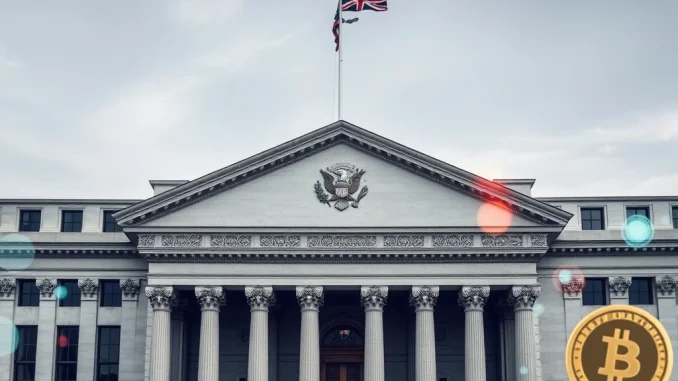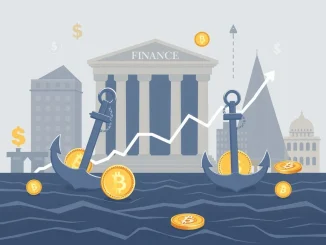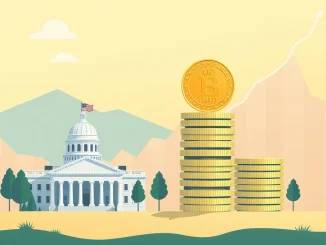
Stablecoins are a crucial part of the cryptocurrency landscape, designed to maintain a stable value, often pegged to traditional assets like the US dollar. As their usage grows, governments worldwide are paying close attention. This includes the United States, where discussions around stablecoin legislation are progressing, aiming to establish clear rules for these digital assets.
Stablecoin Legislation: A Potential Catalyst for US Bonds?
According to reports from Odaily, US Treasury Secretary Scott Bessent recently shared his perspective on the potential economic impact of enacting clear laws for stablecoins. Secretary Bessent stated that he expects stablecoin legislation to lead to increased demand for US government bonds.
Why would regulating stablecoins potentially increase the appetite for US bonds? The connection lies in how many stablecoins are structured. Stablecoins that are pegged to the US dollar often maintain reserves to back their value. These reserves frequently include highly liquid, low-risk assets. US government bonds, particularly short-term Treasury bills, fit this description perfectly.
Think of it this way:
- Stablecoin issuers need to hold assets to ensure their stablecoin can always be redeemed at its pegged value (e.g., $1).
- Regulatory frameworks for stablecoins are likely to mandate specific reserve requirements.
- These requirements will likely favor safe, liquid assets.
- US bonds are considered among the safest and most liquid assets globally.
- Therefore, clearer regulations could push stablecoin issuers to hold more US bonds in their reserve portfolios.
The US Treasury’s Perspective on Stablecoins and the Economy
The US Treasury Department plays a vital role in managing the nation’s finances, including issuing government debt (bonds). The Treasury’s interest in stablecoins isn’t just about regulation; it’s also about understanding their potential impact on the broader financial system and the demand for US debt.
Secretary Bessent’s comments highlight a view within the US Treasury that integrating stablecoins into a regulated framework could offer economic benefits, specifically by creating a new, reliable source of demand for US government securities. This perspective underscores the growing recognition of digital assets within traditional financial circles.
How Stablecoins Could Drive Demand for US Bonds
The mechanics are straightforward. If stablecoin legislation requires issuers to hold a significant portion of their reserves in assets like US Treasury bills, then as the stablecoin market grows, so too would the demand for these bonds. This increased demand could potentially offer stability or even slightly lower borrowing costs for the US government, although the scale of this impact depends heavily on the specific requirements of the legislation and the growth of the stablecoin market.
Crypto Regulation and Its Impact on Financial Markets
The discussion around crypto regulation is multifaceted. While the focus here is on stablecoins and their link to US bonds, broader crypto regulation aims to address consumer protection, financial stability, and illicit finance concerns across the entire digital asset ecosystem. Clear rules for stablecoins are often seen as a priority due to their potential to scale rapidly and integrate with traditional payment systems.
The potential for US bonds to benefit from this regulation illustrates how the digital asset world is becoming increasingly intertwined with traditional finance. Regulatory clarity, while sometimes challenging for the crypto industry, can also create pathways for greater adoption and integration into the existing financial infrastructure.
Stablecoins and US Bonds: What Are the Implications?
The potential implications of this trend are significant:
- For the US Government: Increased demand for bonds can help finance government spending.
- For Stablecoin Issuers: Clear rules provide a framework for operation, potentially increasing legitimacy and adoption, though reserve requirements add operational constraints.
- For the Crypto Market: Regulatory clarity can foster trust and potentially attract more institutional participation.
- For Investors: Understanding the reserve structures of stablecoins becomes crucial for assessing their stability.
However, challenges remain, including finalizing the specifics of the stablecoin legislation, ensuring robust oversight, and managing potential risks associated with large-scale reserve holdings.
Conclusion
US Treasury Secretary Scott Bessent’s comments underscore a notable perspective from a key financial authority: that thoughtful stablecoin legislation is not just about regulating a new technology but could also serve as a mechanism to bolster demand for US bonds. As the debate around crypto regulation continues, the potential economic impacts, like the one highlighted by the US Treasury regarding stablecoins and US bonds, will remain a central point of discussion for policymakers and market participants alike. This intersection of digital currency policy and traditional government finance signals the evolving landscape of global economics.



